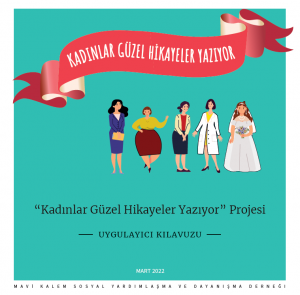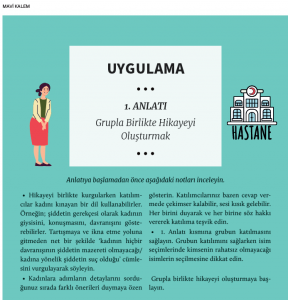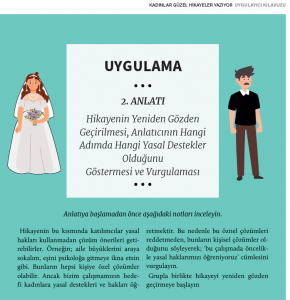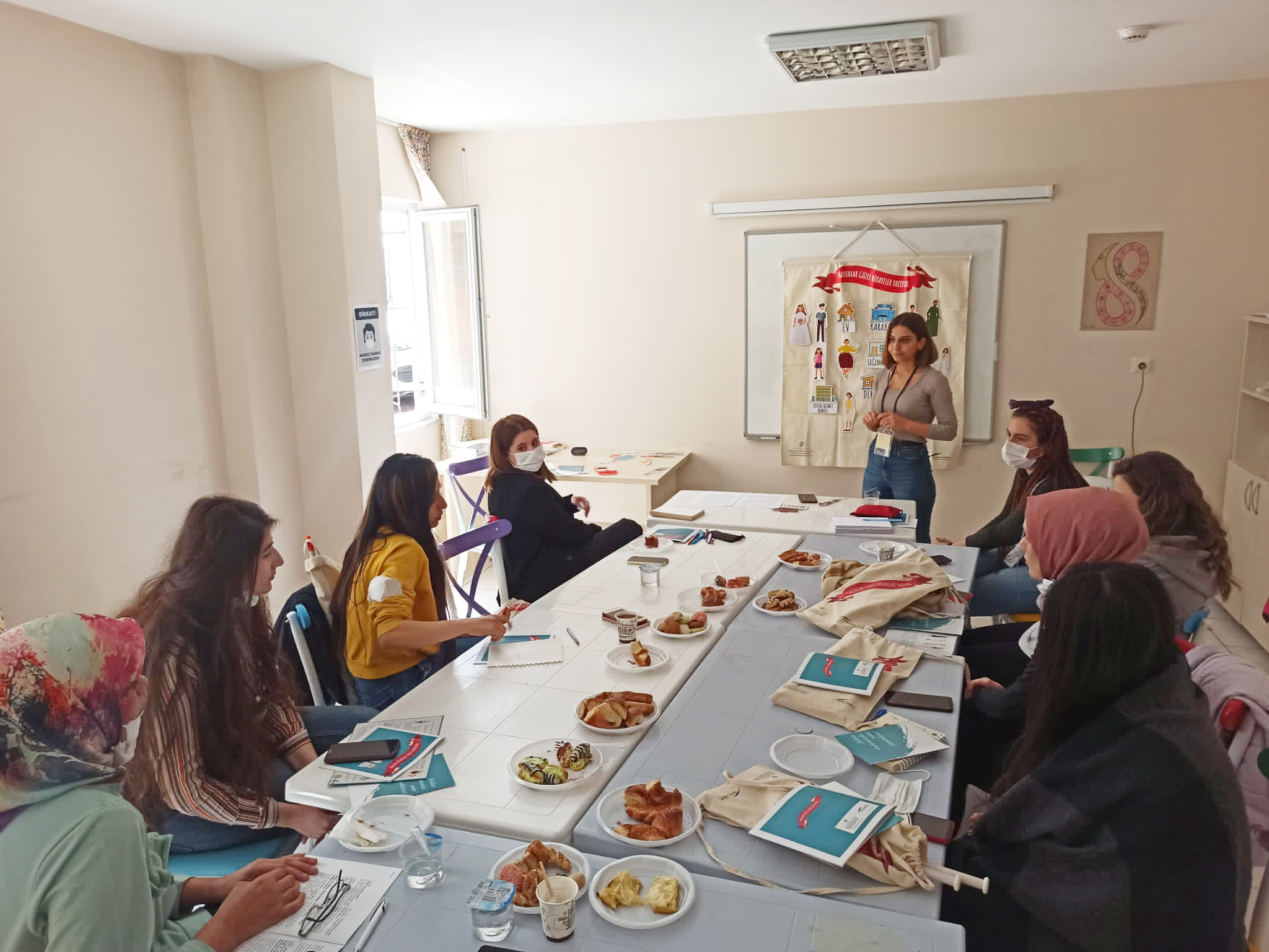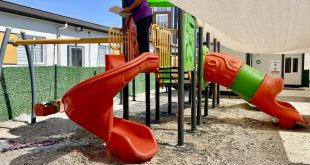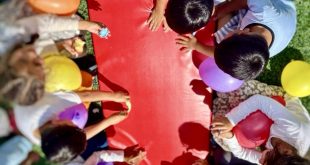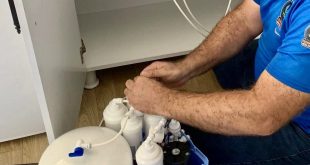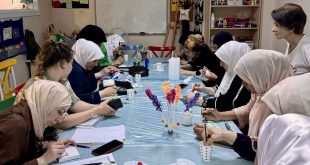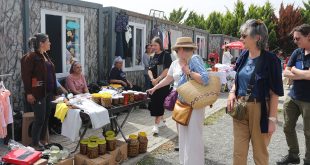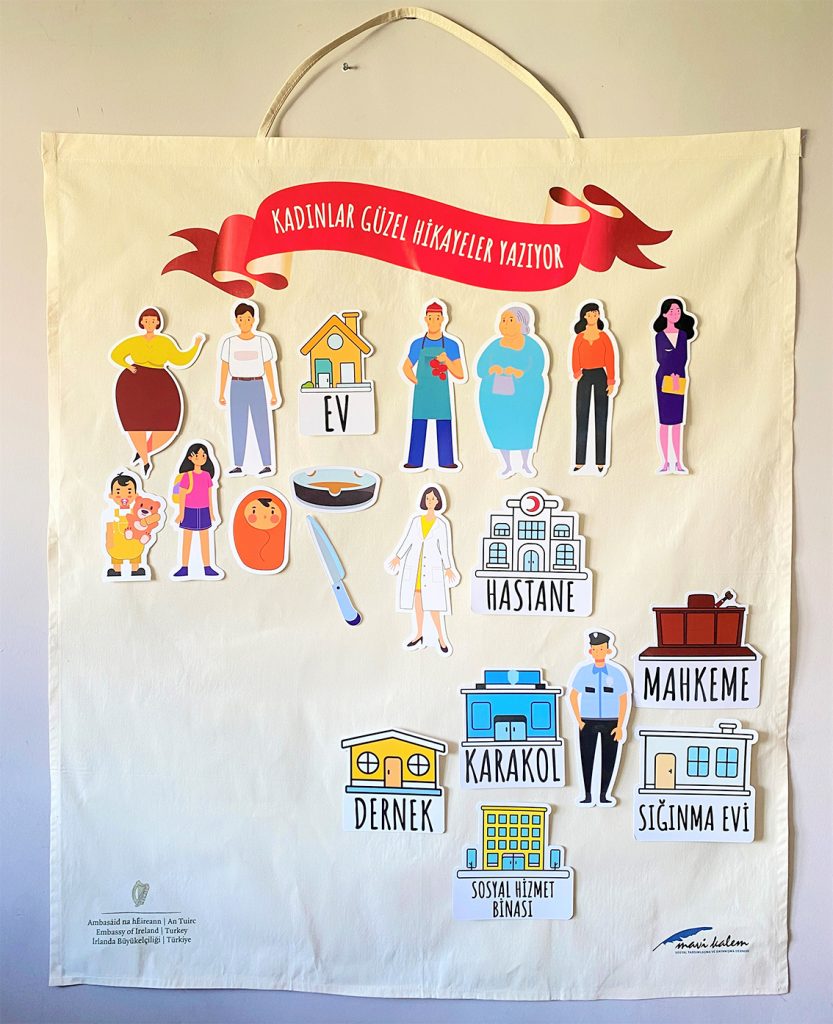 Most women in Turkey know about their legal rights against violence but do not use them.
Most women in Turkey know about their legal rights against violence but do not use them.
We set out to make a project with women where we will talk about the legal rights/sanctions against violence and the conditions under which they can be used. Thus, we wanted to create an opportunity to think and evaluate which laws we can get the support of in which situation. The project Women Write Beautiful Stories was born from this point.
Our project consisted of developing an easy-to-use set of materials and methods that would enable the transfer/transmission of information from woman to woman. The result was a set with cardboard figures, an instruction manual and a stage board. As a method, we modeled women’s “days”. Gathering days, tea days, days of chatting with tea, coffee and cookies… We took as examples the conversations from topic to topic, conversations where everyone shared their own examples, gave advice to each other, shared their knowledge and learned from each other.
We all wanted to talk about violence against women by drinking tea and coffee, to go over our legal rights by eating pies and donuts, and to share and reinforce what we know. Ultimately, we aimed to create a warm and reassuring environment where women share their experiences and thoughts with tea and coffee, and to carry out our implementations in this environment.
If the environment is suitable for conversation, if we are with friends, if the children are playing in the next room without crying, and if tea is brewed, we can start the story.
All forms of violence against women have similar plots. In our work, we aimed to anonymize physical violence and the plots in which physical violence is most common, by telling stories. So all women could find and share examples from their own experiences or testimonies. We aimed to remember our legal support and rights through the same story and thus to reinforce this information. Thus, two different versions of the same story emerge. With each work/conversation group, the story is reconstructed together, and in the second part, possible legal interventions are added to the story.
In the implementation, we tell the story with visual support. For this reason, we prepared the most common characters in the stories as cardboard figures, with a cloth board that serves as a kind of stage. The cardboard human figures encompass both the main characters of the story and the supporting characters with whom the main characters can often come in contact. For example, women, men, babies, children, neighbors, siblings, older sisters, grandparents, grocers, shopkeepers. We also added experts to our cardboard characters that can be referenced in the story; such as doctor, lawyer, police, social worker, charity worker.
In addition to the human figures, we aimed to show the places and institutions that may be related to the building figures in the story. We visualized places such as houses, police stations, hospitals, courts, associations, shelters. Thus, in each story, human and building options were prepared that can be used according to the needs.
We prepared a cloth board for the implementer to paste the appropriate figures as the story takes shape. This cloth panel was produced in a way that it can be hung anywhere in the work room with its hangers or laths.
Again, we produced an implementation guide to be a facilitator for implementers. The implementation guide has been prepared in a simple and easily understandable language to explain the implementation process step by step. While giving this information with the guide, we also wanted to support the implementers to be able to implement in an approach that encourages participation. In this guide, we also included the figure pictures we designed and explained how they could be included in the implementation.
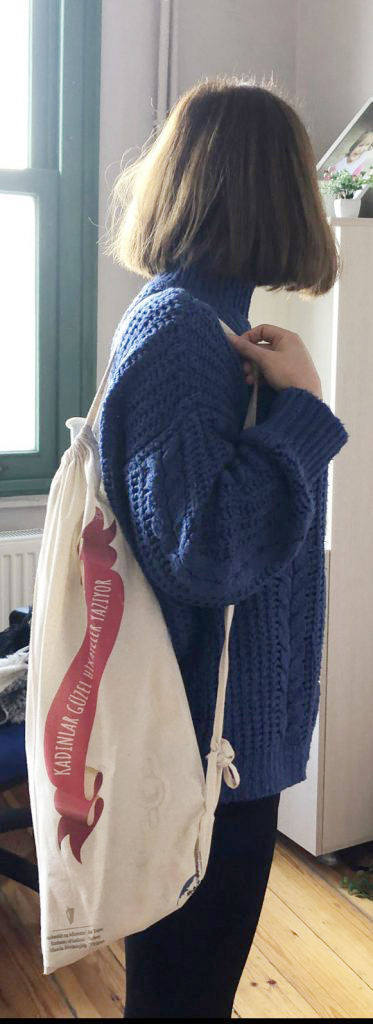 A brochure was also prepared in which we included the legal rights of women against physical violence. The brochure was made to be distributed to the women participating in the work. The guide and the brochure provide an easy way for implementers to carry out the work, as they cover the entire implementation process in an illustrated and understandable language.
A brochure was also prepared in which we included the legal rights of women against physical violence. The brochure was made to be distributed to the women participating in the work. The guide and the brochure provide an easy way for implementers to carry out the work, as they cover the entire implementation process in an illustrated and understandable language.
We aimed for the work set to be easy to use and to be used by all women. For example, the cloth panel is designed to be foldable, hung on the wall or on the windowsill, and easy to attach and remove. Thus, implementers can easily carry the materials to wherever they want with a cloth backpack.
 Mavi Kalem Sosyal Yardımlaşma ve Dayanışma Derneği Hayata Rengini Kat!
Mavi Kalem Sosyal Yardımlaşma ve Dayanışma Derneği Hayata Rengini Kat!


